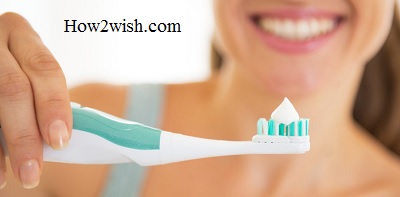Absolutely every person should know how to choose the right toothbrush, determine the degree of its rigidity when buying, and which bristle is better to brush your teeth with – soft, hard, or medium. Specialists of the Dentika Dental Clinic will tell you about this and more. If you do not follow the recommendations of dentists, this can provoke various problems that will require long and expensive treatment in the future. Choosing the right model will ensure the safety, convenience, and effectiveness of the hygiene procedure.

A bit of history
The prototype of this accessory appeared a very long time ago – another 300-400 years BC. e. In ancient times, they also knew how important it is to maintain oral hygiene, so they did not neglect it. However, then, instead of the usual toothbrushes, they used small sticks from special tree species, the ends of which were softened and resembled the working part of a panicle. In Egypt, Rome, Babylon, and Greece, after the procedure, special medicinal compounds were rubbed into the tissues to destroy pathogenic microflora.
A device similar to modern models was invented in China in the 15th century. Then the pile of boar was attached to a bamboo stick. In the XVI century. the accessory was brought to European countries. There he was already equipped with a wooden handle and more delicate badger or horse hair. However, it only became widespread in the 18th century, when Dr. P. Fauchard wrote a well-known great work on dentistry, in which an entire chapter was devoted to the subtleties of care.
A patent for this hygienic accessory was obtained in 1850 in the USA. X. N. Wodsforth then invented a reliable fastening of the bristles to the handle. However, at that time, the accessory continued to be made exclusively from natural materials, which is why there was a high risk of the development of pathogenic microorganisms inside the hair structure.
It wasn’t until 1938 that the DuPont manufacturing plant began to use nylon fibers in its production. It was after this that accessories began to be divided into soft, medium, and hard.
Classification
In all products, the bristles consist of many hairs that are collected in bundles located at different levels and at an angle concerning each other. In some models, the bristles, which are at different heights, perform a certain function. Moreover, depending on the location, the coarseness of the pile may be different. For example, in the middle – coarse hairs for effective cleaning of the chewing area of the teeth, along the edges – more gentle for delicate cleaning of the gums.
All oral hygiene products are sold in the store in a sealed package. That is, it will be problematic to understand their characteristics only by one appearance. Therefore, before taking a toothbrush, you need to look at its marking – a designation of how hard it is. It is indicated by the manufacturer on the box.
Ultra soft
Referred to as “sensitive”. Provides gentle care for enamel and gums. It is used for problems with the inner lining of the mouth. For example, gingivitis and periodontitis.
Soft
The package will say “soft”. Provides gentle cleaning with excessive sensitivity of fabrics. Also, such options are recommended for children.
Medium roughness
Denoted by the word “medium”. This is the best choice for most people who do not have any problems with oral cavities and dental diseases.

Rigid
The packaging is labelled “hard”. Such models are effective in removing plaque and food debris, but they are not suitable for all people. They can only be used when there are no lesions, including caries. That is, the oral cavity is in perfect condition.
Maximum rigidity
Denoted by the words “extra-hard”. Suitable for those who have extremely strong gums and teeth. If after cleaning there is discomfort, blood, or damage, you need to switch to softer options.
This option must be prescribed by a qualified dentist. It is usually indicated in the presence of removable dentures, fixed bridges, and bracket systems.
How Often Should You Brush Your Teeth? What is the Best Time to Brush Your Teeth?
Conditions governing the choice of brush hardness
Before choosing a suitable model, you need to rely on the condition of the oral cavity. It is best to visit a dental office so that a specialist can give professional advice.
In addition to stiffness, you also need to pay attention to the processing of the ends of the villi. They should be rounded. If they are sharp, there is a high risk of scratching enamel or fabrics with them.
A properly selected device guarantees high-quality and safe hygiene, efficiently removes plaque, gently massages, and avoids injury.
Who are soft brushes suitable for?
Products marked “soft” are shown in the following cases:
- Children age up to 12 years. Moreover, for children, if they have not yet reached the age of five, it is preferable to purchase a model with the designation “sensitive”.
- The presence of dental problems – inflammation in the gums, tissues, and so on.
- Diabetes.
- Predisposition to bleeding gums.
- Problems with blood clotting.
- Tooth mobility.
- Weakness of the enameled coating (fragility, the tendency to destruction, existing damage, etc.).
Note! When using these options, you need to take a responsible approach to the process of cleaning the oral cavity. They are of little efficiency. Therefore, careless cleaning will not be able to remove all impurities, which can lead to various inflammatory processes.
Who are high-hardness toothbrushes suitable for?
Rigid models clean more intensively and efficiently, but they can only be used in the following cases:
- Healthy oral cavity;
- Strong plaque and stone deposits;
- Regular consumption of coffee drinks, and red wine;
- Use of tobacco products;
- Narrow gaps between teeth and so on.
An intermediate option is product “medium”. They are suitable for most users. The choice in their favor should be made if soft models do not cope with their tasks, and devices with coarse bristles injure tissues.

What else to consider
When buying a toothbrush, you need to rely not only on its rigidity but also on some other parameters.
What is bristle made of?
It comes in two types – natural and non-natural. Many people believe that the first option is better since it is a natural material, which means that it is environmentally friendly, and there are no harmful chemicals in it. However, this belief is not true specifically for hygiene products intended for the oral cavity. Naturalness has more disadvantages than advantages:
- Natural fibers cannot be rounded at the ends. Because of this, they scratch the enamel and mucous membrane, exfoliate faster and become unusable. Synthetic hairs are rounded and polished. They clean more effectively and gently.
- The natural pile has a porous structure and channels in which pathogenic microorganisms accumulate and multiply. They cause the development of various diseases.
- Natural hairs are coarser. Even with gentle pressure, they can injure tissues.
- Natural bristles cannot be disinfected, as after that they lose their characteristics.
However, natural material also has an advantage. It is environmentally friendly, and hypoallergenic.
Artificial models are made from the following raw materials:
- Nylon;
- Setron;
- Perlon;
- Derolon;
- Polyurethane.
Some varieties have bristles from several of the listed materials at once. In their manufacture, fibers with different diameters are used:
- Ultra-soft bristles are obtained from hairs with a cross-section of 0.15 – 0.18 mm;
- Soft – 0.2 mm;
- Medium hardness – 0.22 mm.
In most cases, the pile has the same thickness. However, some manufacturers produce models in which the hairs have different diameters.
Additional benefits of bristles
Modern technologies allow producing improved versions of toothbrushes:
- Pile with rubberized texture. This is ensured by the nano-spraying of polymers along the entire length. Thanks to this feature, the device cleans the oral cavity more efficiently, and polishes, thus refreshing the enameled surface. In addition, this characteristic extends the life of the product.
- Hair with thin edges. Guarantees high-quality cleaning of gaps between teeth. The tips of the pile are very thin (0.01 – 0.02 mm), and they fit better into small gaps. Due to this, hard-to-reach areas are efficiently cleaned.
- Bristle with activated carbon. Microscopic particles absorb water and paste grains. Due to this, the accessory retains its performance characteristics longer. In addition, charcoal perfectly absorbs unpleasant odors and freshens breath. Pile with bamboo has similar properties.
- Spiral hairs. They get their shape by twisting 2 or more villi. Due to this, they become rougher. Not only the tips but also other parts of the pile take part in cleaning. This improves the productivity of the entire process.
- Villi with ultra micro tips. Due to this, the tissues are not injured during cleaning. Additionally, antibacterial components are added to the structure of the material, which act as a prevention of inflammatory processes.
Also, models have recently been invented in which silicone protrusions are present instead of a pile. They effectively and gently clean the mucous membrane and enamel coating.
Accessory types
Also, one of the main criteria for choosing a toothbrush of different hardness is its type:
- Mechanical. This is a classic variety with an affordable cost, as there are no additional components (removable nozzles, rechargeable batteries, etc.). It allows you to control the degree of pressure. But it should be borne in mind that brushing your teeth will need to be given more time, to master its correct technique.
- Electrical. Suitable for strong enamel, without hypersensitivity. Effective for removing plaque, cope even with strong deposits of stones. Some manufacturers supplement the package with special interchangeable nozzles for cleaning the tongue. Certain models allow you to adjust the speed of the movement of the head. However, it should be borne in mind that they can damage tissue. They need a regular change of nozzles, which is not cheap. For some, they even cause migraines and nausea during the cleansing process.
- Ultrasonic. Effectively clean the enamel from strong deposits. Additional nozzles may be supplied with the kit. For example, for bleaching. They do not damage tissue but are not suitable for users with excessive sensitivity. In addition, they are not intended for daily use. They are recommended to be used every other day. If you do not take this moment into account, you can provoke wear of the enamel coating, damage it, and cause hyperesthesia. This model is contraindicated in cardiac pathologies and with braces and implants installed.
- Orthodontic. These are specialized devices intended for patients who have prostheses and bracket systems. They are characterized by a small groove in the center of the working area for more thorough cleaning of the plates.
- Ionic. Inside the handle is a compartment filled with titanium dioxide. When you press the plate, an ionic stream is released, which draws plaque particles from the enameled surface. Such models can be used even without a paste. If it is applied, they enhance its effect.
Before choosing a suitable variety, it is recommended to consult a dentist.

Shape and size
When buying, you must adhere to the following rules:
- The head should cover 2 – 2.5 teeth. If it is too large, it will not be possible to effectively clean hard-to-reach places.
- The length of the working area for adults is a maximum of 30 mm, and for children – 18 – 25 mm.
- The head should have a round shape so as not to injure the tissues during the hygiene procedure.
- The connection between the working part and the handle should be movable. That is, it created the effect of a spring. This reduces the pressure on the surface, which reduces the risk of injury.
Note! The bristle consists of several bundles of villi. The larger the area of the working area, the more they should be.
When is it time to change your toothbrush?
No matter how high-quality the product is, in any case, it needs regular updating. This is necessary for the following reasons:
- After a certain time, the bristles change their original shape, delaminate, and soften. As a result, they are not able to get rid of even minor pollution, not to mention strong plaque. When you try to press harder for better cleansing, the villi spread to the sides, which causes a risk of damage to the gums and enamel.
- With prolonged use of this accessory for oral hygiene, pathogenic microorganisms accumulate in its bristles and begin to live. Various fungi, viruses, and bacteria can provoke inflammation in the mouth.
Experts recommend changing this hygiene item at least once every 3 months. It is also necessary to carry out an unscheduled replacement after past diseases of the oral cavity. If you bought this hygiene item and realized that it does not suit you (for example, the gums bleed after cleaning, and so on), it is better not to spare money, throw it away and purchase a new one, more carefully approaching the study of characteristics. If this is not done, injuries can be caused that can cause significant discomfort and cause infections
Summing up
We told you what a toothbrush should be – high, soft, or medium hardness, and also figured out how to find out and understand its given parameter by looking at the markings on the package. This is an extremely important selection criterion that provides not only effective but also safe, comfortable cleaning of the oral cavity. If you are in doubt about which option is right for you, visit the Dentika Dental Clinic. Experienced specialists will assess the condition of your teeth and give professional recommendations.